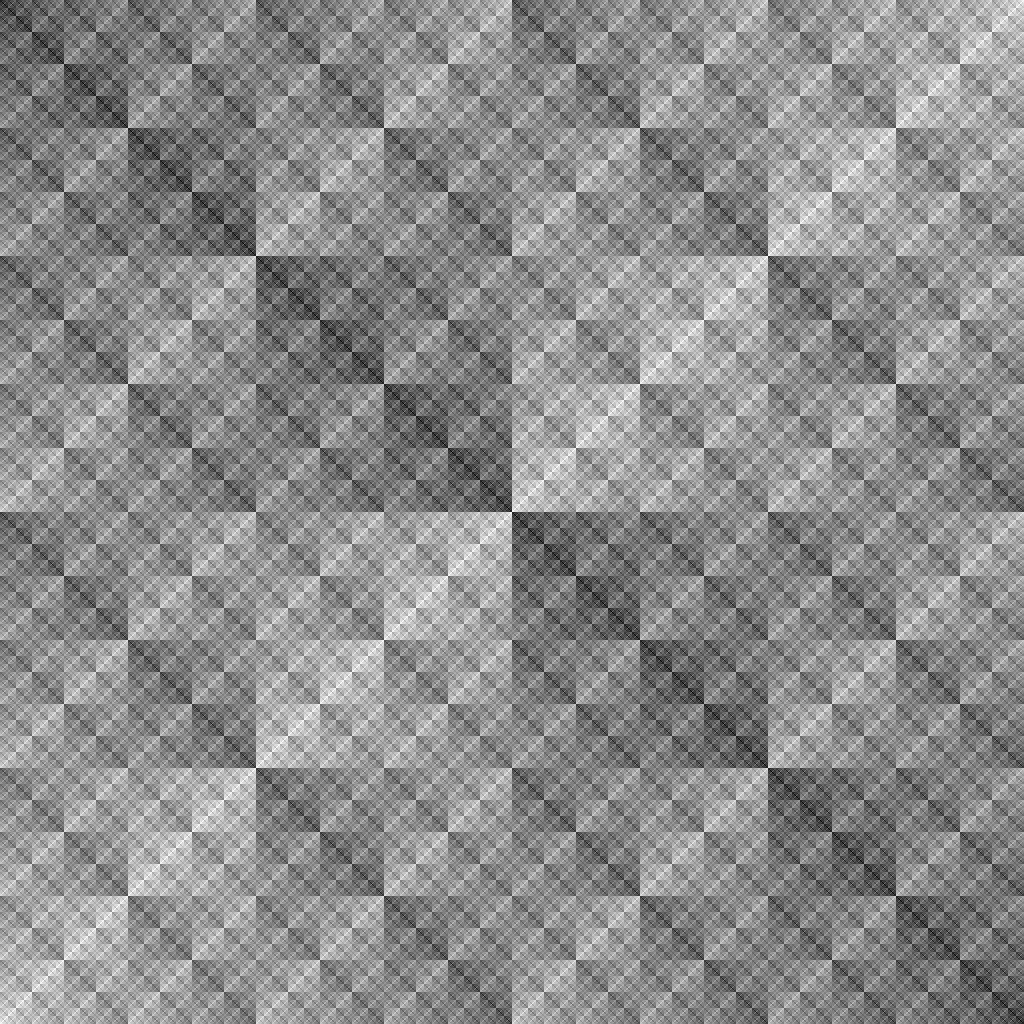ShopDreamUp AI ArtDreamUp
Deviation Actions
Description
A fractal pattern generated by a progressive replacement system - each rule has the same relationship to its neighbors. In math, numbers are constructed with just such a system; start with zero and each number is the number before it plus one. It is how we count.
[Broken links: See Progressive 2 for a description and Progressive 2x2 rule systems for descriptions of, and links to, related patterns.] The pattern is a 2-D generalization of Sloane's integer sequence A000120.
A 2K x 2K version.
MATLAB
Here's a color version.
Also see ~vidthekid's related pattern "Silver Squares".
----------------------
There are no restrictions on use of this image. Claiming to be the originator or owner, explicitly or implicitly, is bad karma. A link (if appropriate), a note to markdow30@gmail.com, and credit are appreciated but not required.
[Broken links: See Progressive 2 for a description and Progressive 2x2 rule systems for descriptions of, and links to, related patterns.] The pattern is a 2-D generalization of Sloane's integer sequence A000120.
A 2K x 2K version.
MATLAB
Here's a color version.
Also see ~vidthekid's related pattern "Silver Squares".
----------------------
There are no restrictions on use of this image. Claiming to be the originator or owner, explicitly or implicitly, is bad karma. A link (if appropriate), a note to markdow30@gmail.com, and credit are appreciated but not required.
Image size
1024x1024px 194.41 KB
Comments12
Join the community to add your comment. Already a deviant? Log In
I don't understand L-systems, but it looks like you could also define it like this:
If X and Y are the two cartesian coordinates of any point in the square and have a range of [0,1), then the brightness of the image at that point can be obtained by expressing X and Y in binary (with an infinite number of fractional bits) and combining them with an exclusive or operation. Using a finite but large number of binary bits (in this case, is it 110?) will produce an approximation; a larger number of bits increases both the spatial and brightness resolution -- the pixel resolution and color depth, in computer graphics terminology.
But you probably already knew that.
If X and Y are the two cartesian coordinates of any point in the square and have a range of [0,1), then the brightness of the image at that point can be obtained by expressing X and Y in binary (with an infinite number of fractional bits) and combining them with an exclusive or operation. Using a finite but large number of binary bits (in this case, is it 110?) will produce an approximation; a larger number of bits increases both the spatial and brightness resolution -- the pixel resolution and color depth, in computer graphics terminology.
But you probably already knew that.



































